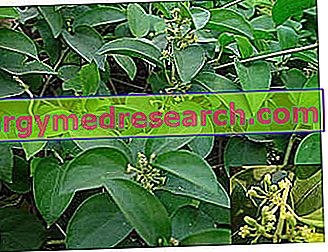Introduction
In the past, gymnema was classified among the natural remedies par excellence in the treatment of the so-called "sweet urine" (pathology better known as diabetes mellitus). On the other hand, just think of the etymology of the name "gymnema": it derives from "Gur mar", a term that, literally translated into the Hindu language, refers to "eat sugar". Not surprisingly, in ancient folk medicine, it was recommended to chew gymnema leaves to reduce glycosuria.

In this article the plant will be studied in botanical and phytotherapeutic terms, extrapolating the key points: the most influential medicinal property of gymnema will therefore be dealt with extensively, without, however, neglecting the lesser known but equally important aspects.
Botanical description
Gymnema sylvestris is a small shrub belonging to the Asclepiadaceae family: we are analyzing a typical climbing plant native to central Africa, currently widespread in all continents except America. Gymnema imposes itself with its dense ramifications, climbing up to the top of the highest trees; its branches are covered with opposite leaves, petiolate, oval in shape, sometimes elliptical. The flowers are typically bell-shaped and gathered in pedunculate racemes.
Active principles of gymnema
The starting matrix for the extraction of the active ingredients is represented by the Gymnema leaves, with the characteristic bitter and at the same time bitter taste.
The active ingredients that make up the phytocomplex are numerous: a note of merit is up to the gymnemic acids (gymnemic and deacylgymnemic acid, present in the leaves in the form of potassium salt), to which the cardinal activity of the plant is attributed (hypoglycemic).
Also important are the four saponins of gymnemic acid (identified with the first four letters of the alphabet), phytosterols, pectins, conduritol A and gurmarine (an anti-softening polypeptide, which surpasses the sense of taste towards sweet foods). [taken from www.simn.org]
List of properties
Given the complexity of the substances that characterize the gymnema extract (leaves), the table shows all the activities related to it.
| Gymnema activity | Short analytical description |
| Antidiabetic (hypoglycemic) | The most important activity attributed to the plant: the extract of gymnema lowers the blood sugar significantly (action targeted on intestinal glucose absorption) |
| pancreatic | Gymnema appears to stimulate the pancreas to produce insulin, in addition to repairing pancreatic tissue (in vitro study) |
| cholesterol lowering | Mainly given by glycosidic acids |
| Alteration of the perception of sweet taste | The plant exerts its medicinal properties even at the oral level, abolishing the ability to perceive the sweet |
| antibacterial | Against Bacillus pumilis, Bacillus subtilis, Staphylococcus aureus and Pseudomonas aeruginosa . Inactive to E. coli |
| Antiemorroidaria | Topical application |
| Diuretic | Stimulates diuresis |
| Laxative and stimulants | The plant becomes part of the composition of useful products in the case of obesity associated with constipation |
| Eye improvement activities | In this regard, many eye drops are formulated with gymnema (leaf extract). Useful against cataracts, crystalline opacification etc. |
| Anti-obesity and slimming | Activities strictly related to the antidiabetic virtues of gymnema |



